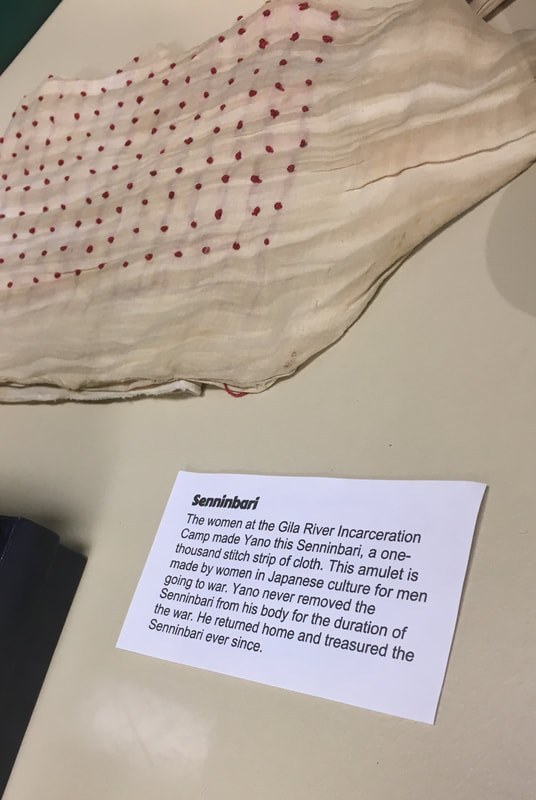According to Wikipedia: The custom of producing senninbari originated during the first Sino-Japanese war of 1894-1895. senninbari were pieces of material in the shape of a belt or sash containing 1000 knots applied to it in order to impart strength to the material. The implication of this was that as an amulet, or good luck piece, compounded strength or luck was to be passed along to the man carrying it. In general, senninbari were believed to confer courage, good luck and immunity from injury (especially bullets) upon their wearers.
A senninbari could be made by a man's mother, sister, or wife if married. She would stand near their local temple, train station, or department store and ask any female passerby to sew in a French knot stitch. During the most hectic days of the war in order to meet demand, women's patriotic organizations would gather to make senninbari en masse.
For Bob Yano, the women at the Gila River Incarceration Camp made his senninbari. He never removed it from his body for the duration of the war. He returned home and has it placed with his most treasured possessions.
I found this story, and the history behind it to be heartwarming. What an amazing tradition that appears to be lost today. I can only imagine what it must have been like to create such a sash for a loved one going to war. What it would be like to ask 999 women to sew a small knot on the garment for him. What love must have gone into the process. No wonder Mr. Yano didn’t remove it during the war. Such a touching tradition and story.

 RSS Feed
RSS Feed